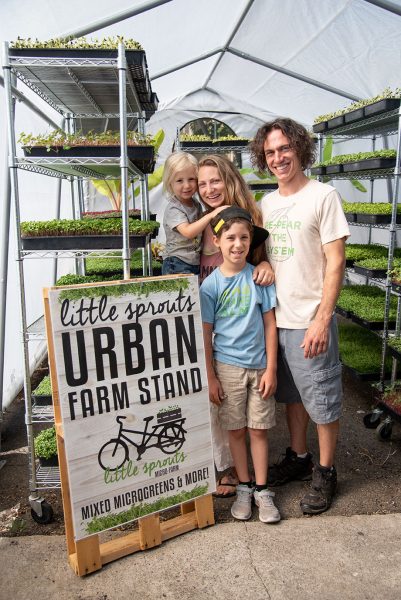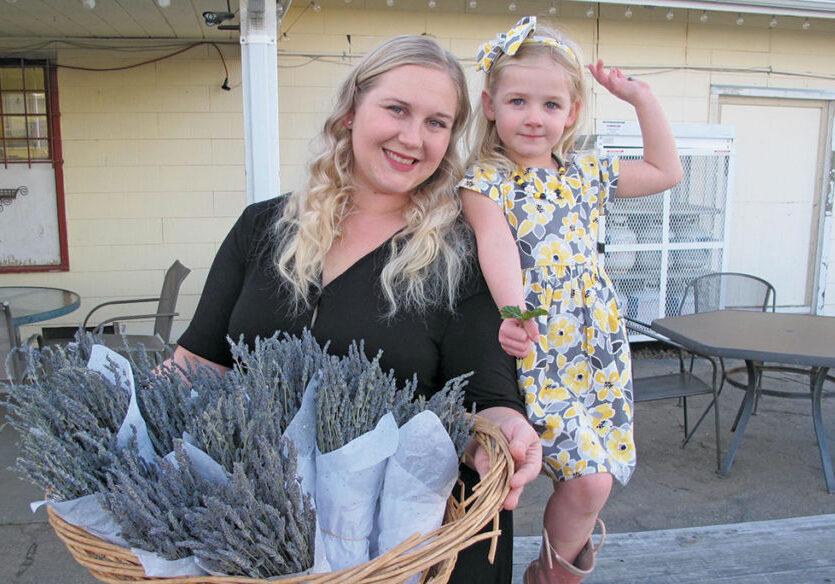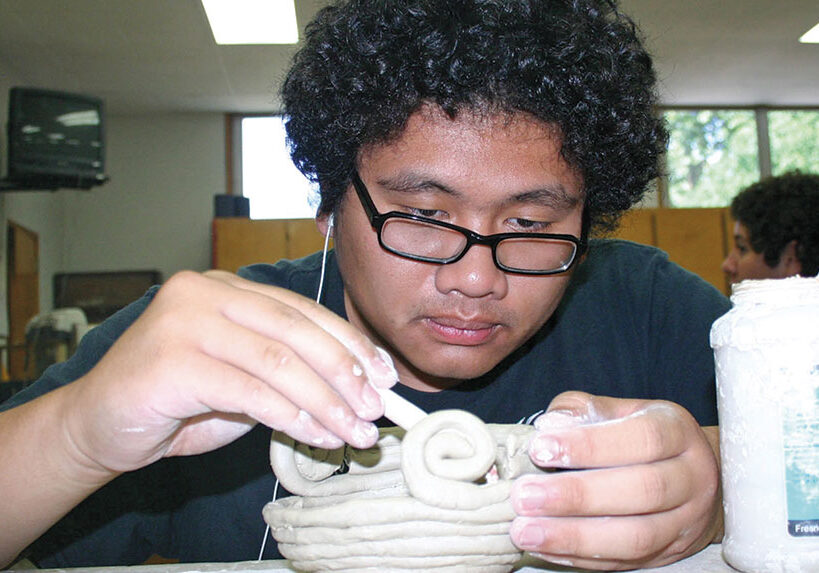

Heather and Rick Phillips and their children own and manage Shasta County’s Little Sprouts Micro-Farm and the Gather Redding farmer’s market. Follow them on Facebook to learn more about these completely local food-focused enterprises. Photo by Marjie Kennedy, Six Rivers Photography.
Could You Be a More Locavore Family?
Want food that tastes amazing? You can’t beat local, in-season food. Other benefits of eating locally include eating more real food, knowing where your food comes from, cutting down on fossil fuel use, and supporting local agriculture and economy. And it doesn’t have to be hard.
Lilly Steirer and her family experimented with a year of local eating and found that eating only local foods wasn’t difficult, even with two small children. Even if eating local for a year feels like a challenge, could you eat more local foods than you do?
Lilly’s family chose a year of local eating because in-season food tastes better and because they recognize the impact that our current food system has on our planet. Yes, they missed some things. Her kids talked a lot about ice cream, and Lilly longed for avocados, citrus, and cheddar cheese, but mostly they ate a lot of delicious food.
The biggest concerns about eating locally are usually time, money, and if your kids will participate. Lilly found that her food budget stayed about the same but how she spent money shifted. Less money went to restaurants and more went to whole food ingredients. She needed to plan and prep more but even with a busy family, the time aspect was doable.
Knowing your motivation can help keep you committed to change when things get hard.
Define Local Eating
So, what does eating locally really mean? One common standard is food grown within a 100-mile radius of your home. Lilly chose to define locally as anywhere within the state of Colorado, where she lives. You get to decide what “local” means for your family.
You also get to choose if you will have exceptions to your local eating practice. You may decide that you’re not ready to give up your morning coffee or to first use up the sugar you have in your house before switching to local sweeteners, such as honey or maple syrup.
You can also decide when you will bend the rules. Lilly’s family chose to eat non-local food when they were visiting friends because relationships were more important to them than being rigid in their eating experiment. Lilly suggests that anyone thinking about eating more locally should “choose their own adventure and do what logistically works for them and their family.”
Identify Food Sources
One of the benefits of local eating is knowing the producers, but you may not know the farmers or producers you need to know when you get started. Look at your grocery shopping list, make a list of items you buy regularly, and ask yourself the following questions.
- Can I source this locally?
- Can we replace this with a different food?
- Should we cut this out?
To find food producers, start where you already shop and see what local foods they offer. Then consider convenient farm stands/stores or farmers’ markets. Explain that you are looking to buy more locally and inquire if they can recommend anybody who grows or produces the specific things you need.
5 Easy Ways to Eat More Local Food
Even once you’ve decided what eating locally means to you, you don’t have to eat only local foods. Here are five meaningful, but doable changes you can make:
- Cut out processed food. Since most processed foods aren’t local, cutting out all processed foods can make a big impact right away.
- Choose only one type of food to buy locally. Try adding one local food item at a time. For example, start by only eating locally grown greens. Once you get used to that, then tackle another vegetable or eggs or dairy or meat.
- Make local food the norm. Lilly noticed that she would often go to the farmers market for “special” food. Try buying your spring and summer veggies only from a local farmers market or farm stand.
- Trade out one food you eat for a local alternative. Lilly learned that Colorado grows quinoa, so that became a family staple instead of rice.
- Plan one local meal each week. Eating one local meal a week isn’t that tough. Start by thinking about meals that are easy to make with local ingredients. For example, you could make an omelet with local eggs and veggies. Add local cheese or meat if you choose. You can switch it up each week by using different fillers and herbs. Other flexible options include soup and salad. Both can be made with a variety of ingredients that can shift as the growing season changes.
One thing is clear: you don’t have to go the whole hog into eating locally to connect to your local food. You can take bite-sized steps toward being a more locavore family.
21 Easy & Delicious Ways to Be More Locavore
- Plant a garden.
- Shop farmers’ markets and farm stands. Be sure to check on how local their products are.
- Pick your own fruits and veggies at farms or orchards.
- Get your kids involved in choosing local foods.
- Learn what is harvested when.
- Grow herbs on your windowsill.
- Go to a harvest festival.
- Join a Community-Supported Agriculture model.
- Satisfy your sweet tooth with local honey, maple syrup, dates or fruit.
- Host a weekly dinner when your CSA share comes in.
- Try local food you’ve never had before.
- Buy a share of a locally-raised animal.
- Preserve food during the growing season by canning, freezing, dehydrating or fermenting.
- Keep chickens or bees.
- Start or support a garden at your children’s’ school.
- Hold a harvest feast.
- Look for locally-grown restaurant specials.
- Visit a local winery or brewery.
- Try locally-produced pickles, jams or sauces.
- Invite others to a local meal.
- Let your grocery store or co-op know you want more local options.
Posted in: Community
Comment Policy: All viewpoints are welcome, but comments should remain relevant. Personal attacks, profanity, and aggressive behavior are not allowed. No spam, advertising, or promoting of products/services. Please, only use your real name and limit the amount of links submitted in your comment.
You Might Also Like...

North State Symphony: Healing Hearts through Music
In the summer of 2018, when the Carr Fire ravaged communities around Redding, CA, North State Symphony (NSS) musicians immediately got on the road. Driving through miles of ash and […]
The Hills are Alive with the Sound of Music: Chico Community Choirs to Perform in Salzburg, Vienna and Prague this Summer
Some of Chico’s best vocalists are heading for the hills – the Alps, that is – on an 11-day tour of Prague, Salzburg and Vienna this summer that will include […]

Pine Creek Flowers
The Value of Locally and Sustainably Grown Flowers On the drive to Pine Creek Flowers, I was delighted by the bright orange poppies, yellow daffodils, and blooming almond trees dotting […]
First 5 Commissions: Raising the Bar for Early Childhood Development
Something monumental happened for families in California in 1998. With the passing of The Children and Families First Act (Proposition 10), First 5 California, also known as the California Children […]


